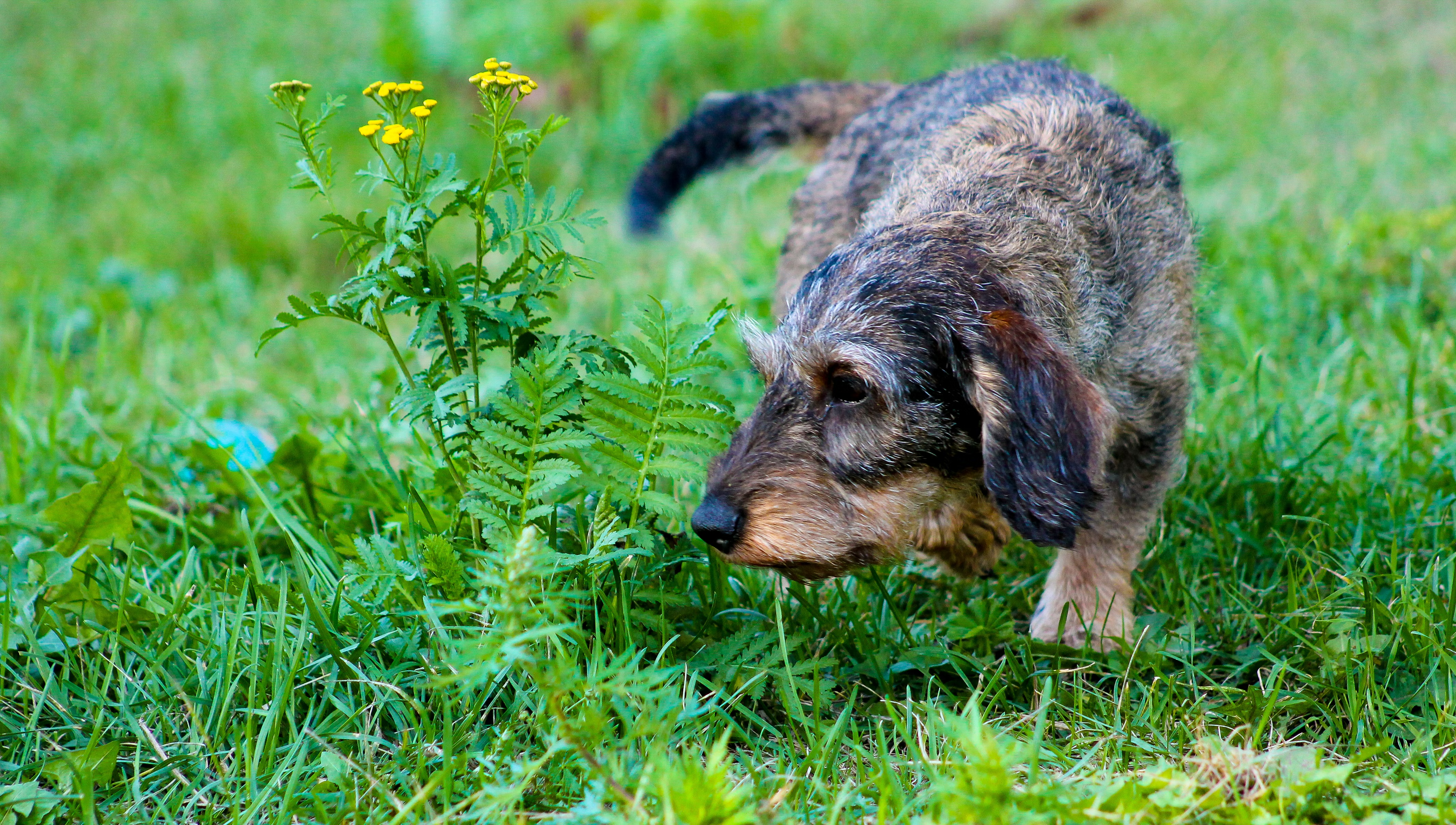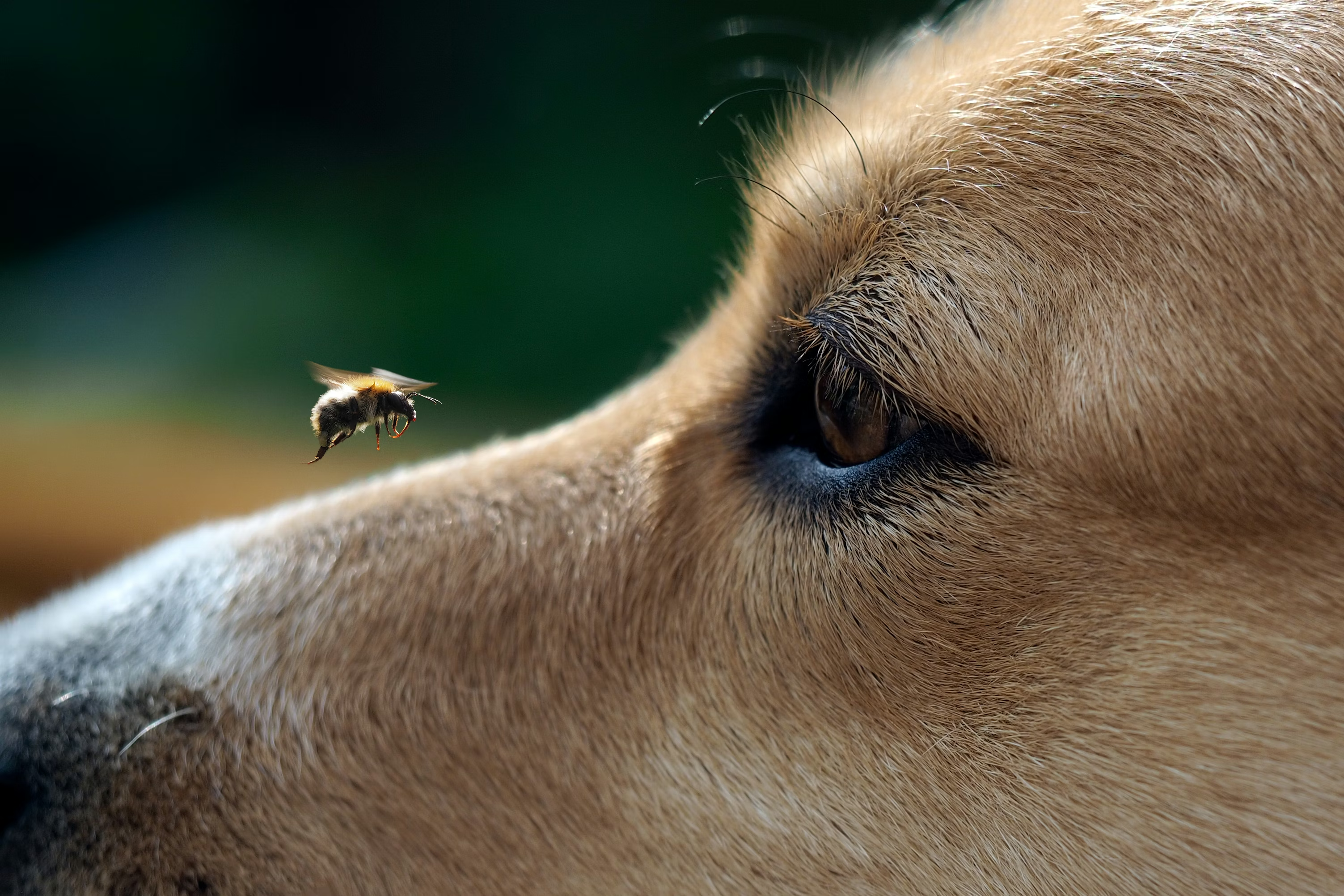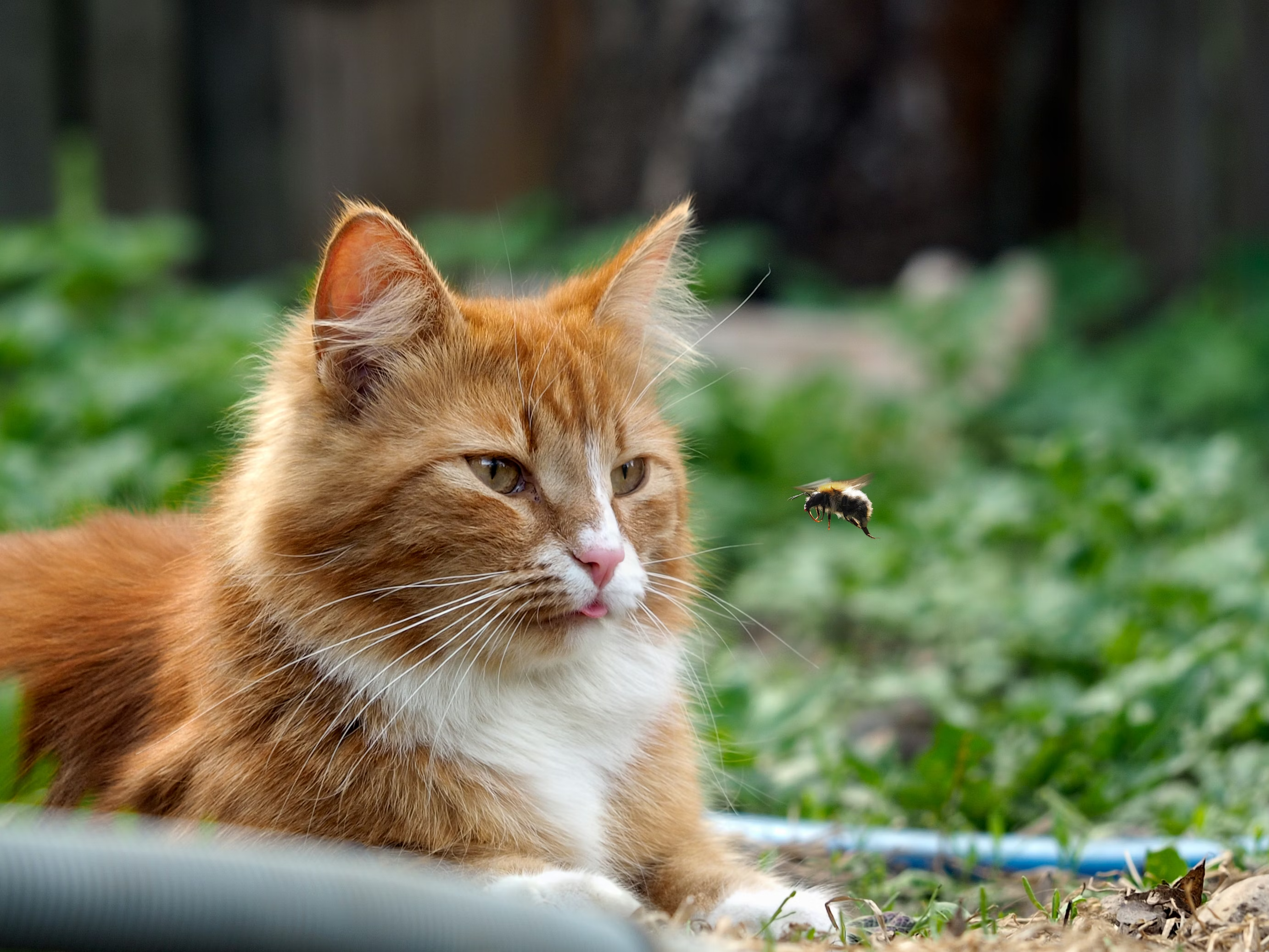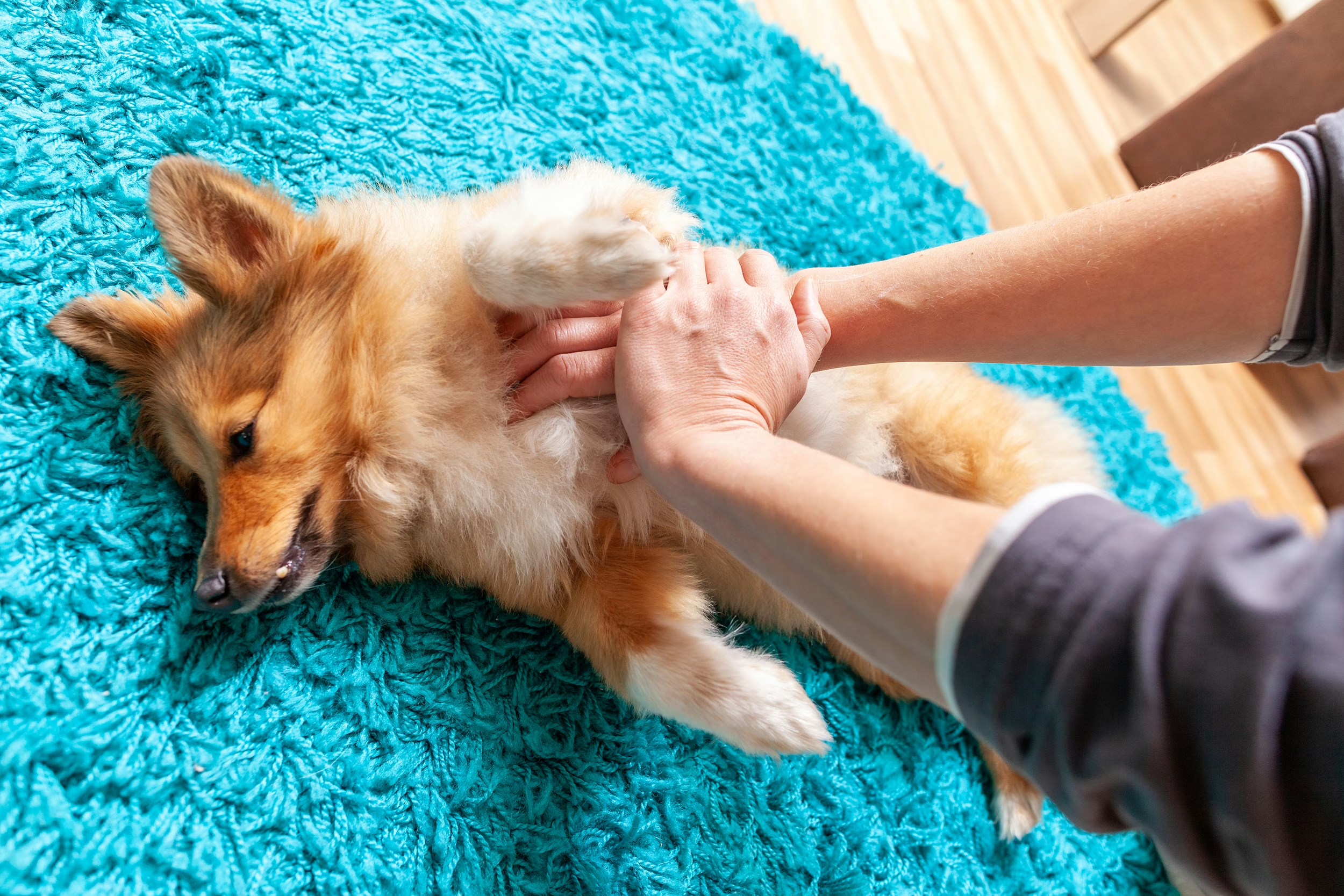One minute, your pet is outside happily playing in the grass or garden. The next, they’re pawing at their face or frantically licking their paw. Sometimes, the cause of this behavior change is a bee sting. If that’s the case, knowing how to react quickly will help determine if the sting is a minor nuisance or a serious health concern.
Why dogs and cats get stung by bees
Bees don’t set out to do harm. Most bee stings in dogs and cats occur after innocent—or even unknowing—interactions. You’ve probably seen a curious cat sniffing or swatting at a bee on a flower. Similarly, playful dogs may snap at bees flying low to the ground. Or, since dogs and cats use their noses to explore the world, they may nudge a bee while sniffing the ground or nearby flowers. And, of course, sometimes a pet accidentally steps on a bee while walking through the grass. All of these scenarios are examples of why dog or cat bee stings happen.

Signs your dog or cat has been stung
Recognizing the signs of a bee sting in your pet is important so you can take quick action. The most common places a dog or cat is stung are the paws, muzzle, face, or inside the mouth. Reactions can vary depending on the location of the sting and your pet’s sensitivity.
Typical signs of a bee sting include:
- Sudden whining, limping, or head shaking
- Swelling at the site (especially noticeable around the eyes, nose, or paws)
- Excessive licking or chewing of one area
- Redness and warmth at the site of the sting
- A puncture wound where the stinger entered the skin
- A visible stinger

How to treat dog and cat bee stings at home
If your pet is experiencing the typical signs mentioned previously, stay calm and follow these first-aid steps:
- Check for a stinger. Only honey bees leave their stinger behind. If you see one, remove it by gently scraping across the skin with a credit card or dull edge. Avoid tweezers, which can squeeze more venom into the tissue.
- Treat the area. Mix baking soda and water to form a paste, then apply it to the sting area to soothe the pain. An oatmeal bath may be helpful for multiple stings.
- Apply a cold compress. Wrap a cloth around an ice pack or bag of frozen vegetables and place it on the affected area for 5–10 minutes to reduce swelling and pain.
- Keep your pet calm and monitor their behavior. Limit your pet’s activity and watch for worsening symptoms over the next few hours. If your pet is biting or licking the area excessively, an e-collar (aka a cone of shame) can prevent them from damaging their skin. Just be sure to monitor your pet to make sure they can’t still reach the sting area with the e-collar on.
- Consult your veterinarian about medication. Antihistamines like Benadryl (diphenhydramine) can ease reactions and reduce itching. But before giving medication to your pet, ask your veterinarian for the proper dose, as it’s different from those given to people.

When to seek veterinary care
Some dogs and cats are allergic to bees, and stings trigger severe reactions. The reaction can start shortly after the sting or take several hours to develop. If your pet shows any of the following signs after a sting, they need immediate veterinary care:
- Vomiting or diarrhea
- Rapid swelling, especially around the face or throat
- Breathing difficulties (panting, wheezing, or shallow breathing)
- Hives
- Excessive drooling
- Pale gums, weakness, or collapse
- Disorientation or signs of shock
- Seizures
Severe reactions can develop quickly and be life-threatening. The faster you can get your pet to the veterinarian, the better their prognosis.
Preventing bee stings in pets
The best way to avoid bee stings is to reduce the number of bees in your yard. You can achieve this by removing flowering plants that attract bees, keeping grass mowed, and keeping food secured tightly. If you find a beehive in your yard, contact a local professional to have it safely relocated. Bees are an important part of our ecosystem, so the goal is not to kill them but to keep them out of your pet’s path when possible.
Keeping all bees away from your dog or cat won’t be possible. You and your pet will encounter bees at the park, on a walk, or visiting someone else’s backyard. In these scenarios, keep an eye on your pet and pay attention to when bees are around. Teaching your pet "come" or "leave it" cues helps get them to leave bees alone. You can also plan your outings for times when bees are less active, typically during the cooler parts of the day. Another handy tool is a sturdy leash that allows you to control their movements and keep them away from nearby bees.
If you know your cat or dog is allergic to bee stings, talk with your veterinarian about getting a prescription for an Epi-Pen®. This can reverse allergic reactions if your pet is stung again.
Final thoughts
A bee sting is a minor and manageable event for many dogs and cats. But for some pets, it can trigger a serious medical emergency. Knowing how to spot a sting, treat it safely, and recognize signs of a more serious reaction will help keep your pet safe during outdoor adventures.















